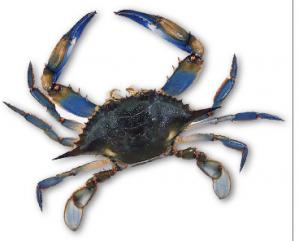 Maryland Governor Martin O’Malley announced Wednesday that the Chesapeake Bay’s blue crab population has increased substantially for the second straight year. The results of the winter dredge survey show a dramatic 60% increase in Maryland’s crab population. The survey indicates that 2008 management measures put into place through a historic collaboration with Virginia and the Potomac River Fisheries Commission are continuing to pay dividends.
Maryland Governor Martin O’Malley announced Wednesday that the Chesapeake Bay’s blue crab population has increased substantially for the second straight year. The results of the winter dredge survey show a dramatic 60% increase in Maryland’s crab population. The survey indicates that 2008 management measures put into place through a historic collaboration with Virginia and the Potomac River Fisheries Commission are continuing to pay dividends.
“Today, because of the unprecedented partnership between Maryland and Virginia and tough decisions over the past two years, the Chesapeake Bay blue crab population is estimated to be 658 million crabs — the highest total population estimate since 1997,” said Governor O’Malley.
The 2008 conservation measures took strong, coordinated action to reduce harvest pressure on female crabs by 34 percent. At that time, scientists from all three jurisdictions deemed conservation measures necessary as blue crab suffered near historic lows in spawning stock.
Blue crab reproduction this year was the sixth highest in the 21-year survey. The abundance of adult female and male crabs also rose again this year, bringing the estimated number of adult, spawning-age crabs to 315 million, well above the interim target level of 200 million.
Watermen actually harvested more crabs this past season than in 7 of the past 10 years, confirming the long-held belief that a healthy harvesting industry can coexist with regulations that protect the long term health of the blue crab population. The 2009 bay-wide harvest level equates to approximately 43 percent of the population.
“The final piece of the story will be confirmation from NOAA’s Chesapeake Bay Stock Assessment Committee (CBSAC) that harvest levels did indeed remain below our target of harvesting no more than 46 percent of the blue crab population each year,” said Lynn Fegley, Assistant Director of DNR’s Fisheries Service. This is key to maintaining a healthy population.”
In 7 of the 10 years between 1998 and 2007, the annual removal of blue crabs exceeded the maximum safe removal level of 53 percent.
“This abundance represents terrific opportunity for commercial and recreational crabbers to realize an increased catch, in less time and at less cost, under current rules,” the Maryland Department of Natural Resources (DNR) Secretary John Griffin. “We are committed to working with our partners to ensure we do not lose the ground that we have gained, and any changes would be based on continuing to remove no more than 46 percent of available crabs during any given year.”
History has shown that populations can change quickly, as evidenced by record 1993 and 1997 levels that were immediately followed by dramatic drops.”
Since 1990, the Bay-wide blue crab winter dredge survey, conducted annually by the DNR and the Virginia Institute of Marine Science (VIMS), is the primary survey used to assess the condition of the Chesapeake Bay blue crab population. The survey has employed crab dredges to sample blue crabs at 1,500 sites throughout the Chesapeake Bay from December through March. By sampling during winter when blue crabs are buried in the mud and stationary, scientists can develop, with good precision, estimates of the number of crabs present in the Bay.
“The increase was neither a random event nor a reflection of improved environmental conditions,” said Dr. Rom Lipcius who directs the VIMS component of the dredge survey.
Under the leadership of Senator Barbara Mikulski, the Congressional Delegation secured $15 million in crab disaster funds from NOAA‘s National Marine Fisheries Service for Maryland to help rescue the crab population and provide needed economic relief to the commercial fishing industry. Governor O’Malley and the Maryland General Assembly also directed $6 million in capital funding to the effort during fiscal years 2009 and 2010.
The funds are supporting a variety of efforts including license buybacks (to date, more than 600 Limited Commercial Crab Catcher Licenses have been retired), and restoration work being conducted by approximately 900 Maryland watermen. Under one such project, watermen removed nearly 8,000 abandoned crab pots or crab pot fragments from Maryland waterways in February and March of this year.
In December of last year, Governor O’Malley released an Oyster Restoration and Aquaculture Development Plan, a multi-faceted effort to rebuild Maryland’s decimated native oyster population.



















